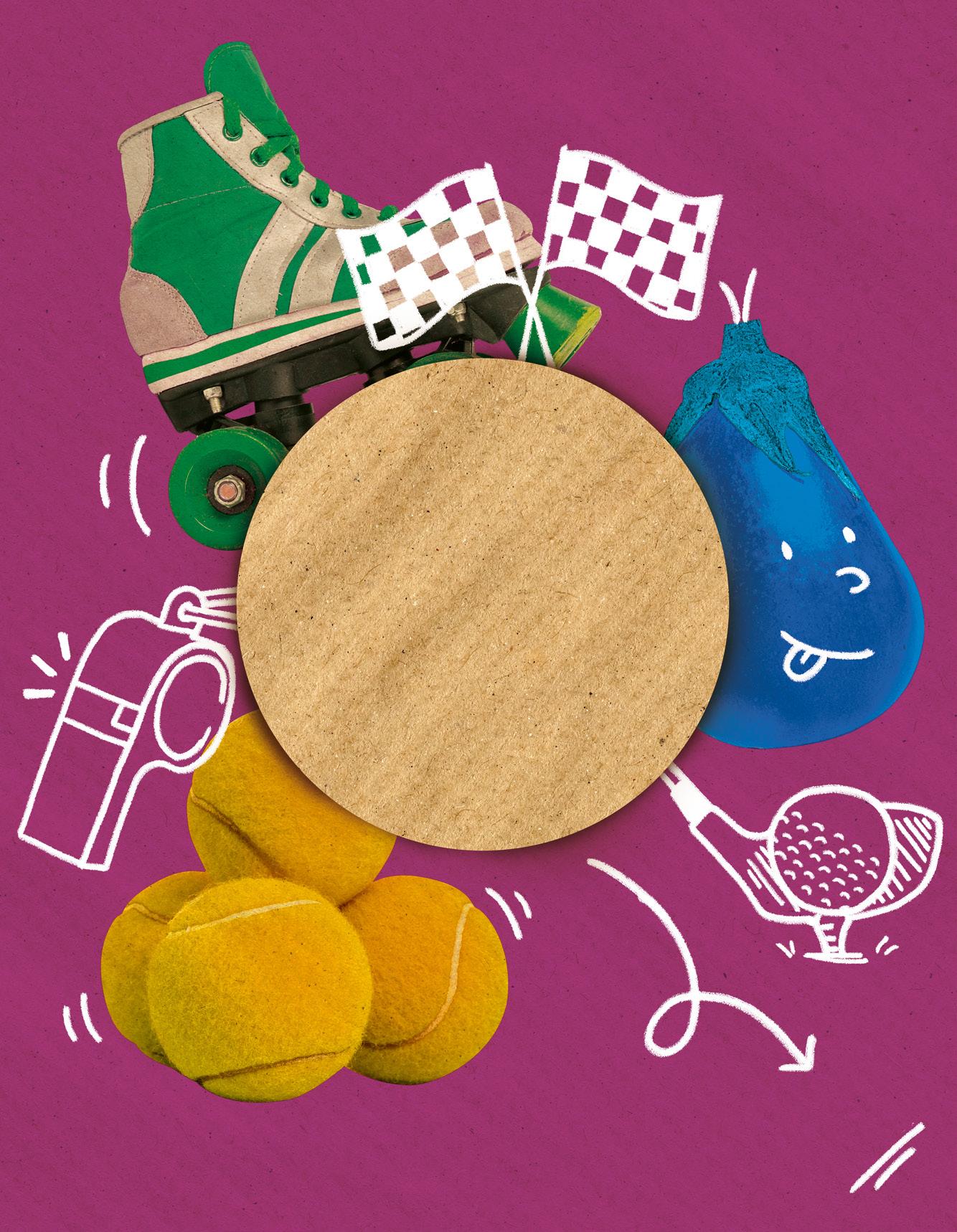
sample
DIGITAL PROJECT
PRIMARY 6 Globalaction Physical Education
INCLUDED
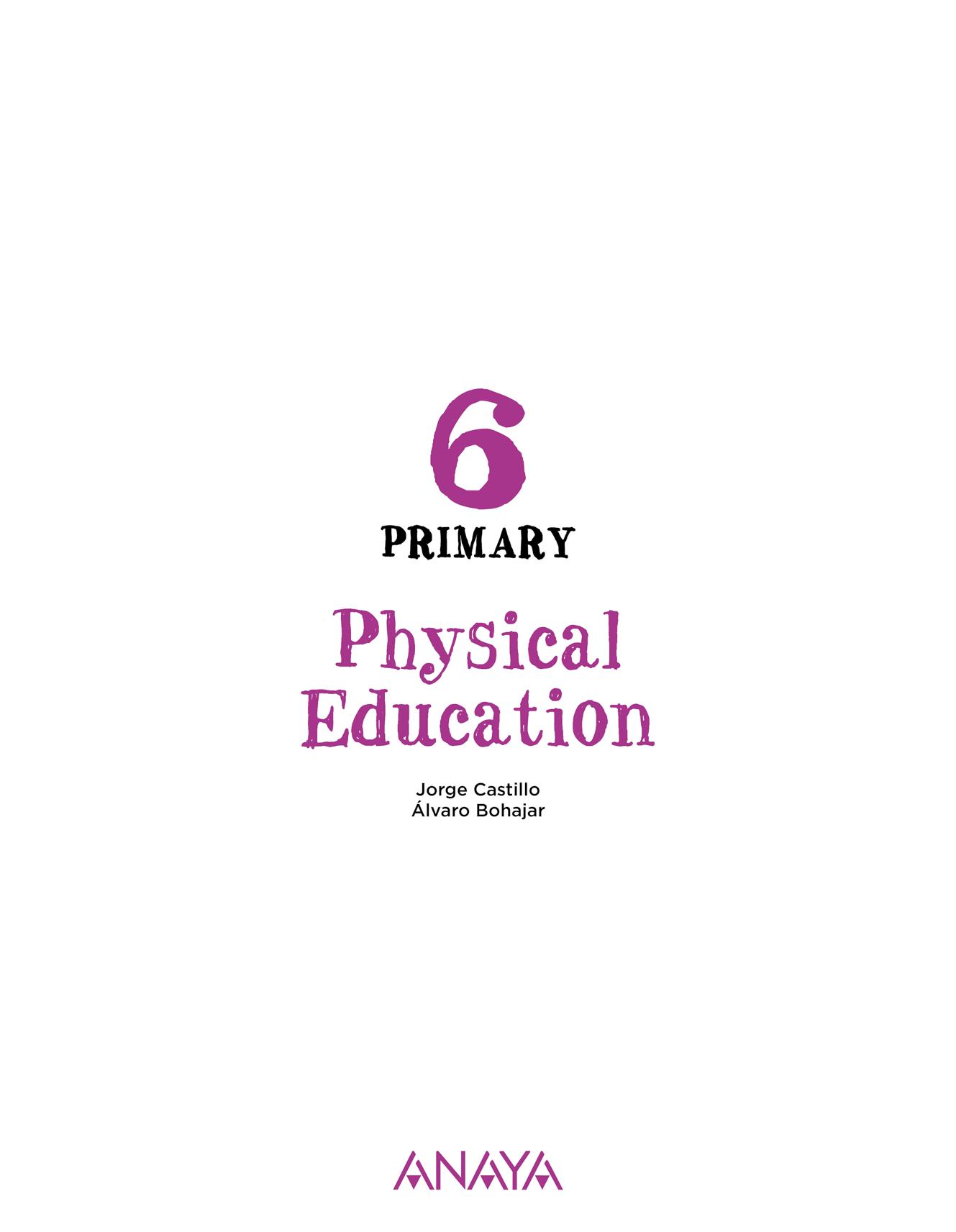
What will you learn?
LEARNING SITUATION TARGET IN ACTION SDG PAGE.






Promote good quality education and the value of the Physical Education. Make a timeline with your memories of this stage and reflect on it.
1 3 5
2 4 6
A space for all Want to play?
Be aware of the importance of improving the space around us to encourage sustainable and healthy use.
FAIR PLAY: SPORT AND RIVALS
Work cooperatively as a team, regardless of gender differences. Encourage participation in group sport by making catchy slogans.
FAIR PLAY: OUTDOORS. CYCLING
Countdown We’re a team! Olympic cities
Develop your creativity by working coopertively. Design a sport that promotes the reduction of inequalities.
What great memories!
Work in a team and do some research. Share and present your work together, use the opportunity to learn from each other.
Make guidelines on how to be physically active through recreation. Help promote a healthy lifestyle now and in the future.
FAIR PLAY: A HEALTHY DIET. SPORTING PERFORMANCES
Quality education Gender equality Partnership for the goals Sustainable cities and communities Reduced inequalities Good health and well-being
6 28 50 16 38 60
• Balance
• Cooperative balance
• Body language
• Moving around
• Stamina and speed
• Pre-sport activities
LEARNING
• Almost impossible
• Everything is spinning
• Put yourself in my shoes
• Cut the thread
• Fifth gear
• Pass the ball
PLAY ZONE
• Spins or rolls
• The characteristics of rolls or spins
• The function of the muscular system
• The origin of dance
• The types of strength
• Popular and tradtional games
• Acrobatic gymnastics
• Roles in acrobatic gymnastics
• Laterality
• Jumps
• Flexibility
• Modified games
• Warm up
• Cool down
• Coordination
• Types of throws and kicks
• Improvisation
• Caring for the environment
• Characteristics of games
• Sports and games
• Orientation and planning
• Receiving
• Respect in sports
• Healthy habits
• Game plans and relays
• Breathing
• Theatre and dramatisation
• Healthy lifestyle
• Orientation in nature
• Observing nature
• Heads or tails
• Spinning tops
• The human doughnut
• Dances of the world
• The dancing bottle
• The human alphabet
• Circus acrobats
• Mad match
• Get the diamond
• Change
• Cars of the future
• Dream snatcher
• What happened?
• Human net
• Roll the dice and add up
• Move with feeling
• Recycle me
• Basque pelota
• Kin-ball
• Prisoner ball
• Baseball
• I trust you
• The hidden truth
• Footvolley
• Assembly
• The mystery card
• The endless list
• The hidden word
• Star


























9 8 U1 PLAY ZONE To keep your balance, your brain uses the information from your ears and your eyes, so it can send the correct orders to the rest of your body. If you start to lose your balance, your brain interprets the new situation. Then, it sends new orders to the rest of your body so you can recover your balance. Some sporting activities require cooperative balance. This is when a group of people work together to keep a stable position, either when moving or when standing still. 1 Look at these children. Which ones have lost their balance? Write the numbers in your notebook. Then explain why. 2 Look at these people. How are they keeping their balance? Write your answer in your notebook. Dynamic balance is even more difficult. My body moves and compensates to help me keep balance. Balance Cooperative balance Everything’s spinning PLAY ZONE ¡¡ ¡¡ Almost impossible a b c e d f 3 Write in your notebook about an imaginary situation that needs good cooperative balance. Then, research on the Internet the “castells” that are part of the Representative List of the Intangible Cultural Heritage of Humanity (Unesco) since 2010. You will play games Competency-based activities Why are you learning this? In each unit there is a learning situation and a final plan of action. All about your book 19 18 PLAY ZONE Look, read and learn the characteristics of spins and rolls. 3 Think of an activity in which you spin or roll. Describe it in your notebook. Then say what type it is. Spins or rolls Spinning tops PLAY ZONE ¡¡ ¡¡ Heads or tails 2 Look at the picture. Analyse the spin and explain it in your notebook. Longitudinal Transversal Antero-posterior Axis of rotation Vertical (upright) Tilted Initial position Vertical (upside down) Horizontal All the time Sometimes No support Support Forwards Backwards Sideways Direction External Internal in relation to your body 4 Think of some situations the people doing these sports might use spins or rolls. Write them in your notebook. Learn more at anayaeducacion.es general knowledge in the learning situation. 4 You will work on your skills Key concepts 6 7 1 Countdown It is the end of Primary Education. You have a lot of memories and experiences about everything you have done at school this year. Promote good quality education and the value of Physical Education. Make a timeline with your memories of this stage and reflect on it. Target in action The facts Every child in the world has the right to go to school. But not every child has quality education that you do.
do you think? How do you keep memories? Digital photographs, letters, bracelets, hats, etc.? 4
What

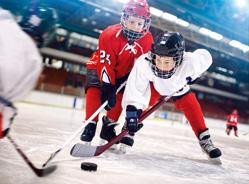







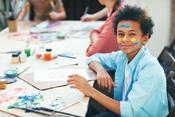


































26 Fair play Sport Competitive tension There are important moments in sport which can be very tense. You may feel tense just before you compete, or if something unexpected happens which makes you feel you are not in control of the situation. During the competition, competitors and the audience may feel many intense emotions. It is important to understand these feelings and manage them. This will help avoid situations which cause you to make mistakes or lose control of your emotions. If you have an important event, always keep calm and control the thoughts generated by your feelings. Think about your re actions and never hurt anyone. Before situation Keep calm Keep your under control Have attitude Control your thoughts 27 Respect is the key to success in any sporting competition. Appreciating your rival helps you learn, enjoy the competition and make an effort. In short, it makes you better at sport. Whether you win or lose depends on how good your rival is. Your rivals make you better at sport because they force you to make an effort and get better. Rivals competitionRespectfulhelps you do your best and make an effort to improve. And in every term... Fair play 15 PORFOLIO What did I learn? 10 Define them in your own words in your notebook. a) Cooperative balance b) Empathy c) Stamina d) Speed. 11 Look at the pictures. Analyse the movements and explain them in your notebook. Traffic lights: Colour in next to the activities. I know how to do it I need help I don’t know how to do it a b U1 your notebook. movements and explain them in your Together, make a timeline with photos and other memories from your Primary School years. the activities. b a) What are you best at? Why do you think it is important? What evidence do you have? 1 Collect memories from Primary School, from different subjects, sports, excursions. 2 Organise everything to make a class mural. Add labels to show people, places or anything that is important to you. 3 Reflect on what you liked best about Primary School and what you liked least; what you would like to change in your school to improve it, etc. Balance Moving around Empathy Stamina and speed Pre-sport activities U1 5 Portfolio And a great digital project from Anaya to you: a global response to a diverse learning environment. Edudynamic is: Intuitive. Downloadable. Simple. Multi-device. Synchronisable. Universal. Icons Gameplay SDG Emotional learning Listening Learning to think Assessment Cooperative learning ICT 9:45 AM 100% adiP Ordena las fases del salto. 1 2 Otra Vez Comprobar El salto Ordena las fases del salto. 1 2 Otra Vez Comprobar El salto Ordena las fases del salto. 1 2 Otra Vez Comprobar El salto Put the phases of jumping in the correct order. Ordena las fases del salto. 1 2 Otra Vez Comprobar El salto Try again
Plan of action
1 Countdown
It is the end of Primary Education. You have a lot of memories and experiences about everything you have done at school this year.
What do you think?
How do you keep memories?
Digital photographs, letters, bracelets, hats, etc.?
The facts
Every child in the world has the right to go to school. But not every child has quality education that you do.

Target in action
Promote good quality education and the value of Physical Education. Make a timeline with your memories of this stage and reflect on it.
6


7 4
To keep your balance, your brain uses the information from your ears and your eyes, so it can send the correct orders to the rest of your body.

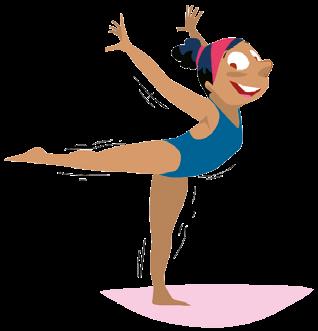
If you start to lose your balance, your brain interprets the new situation. Then, it sends new orders to the rest of your body so you can recover your balance.
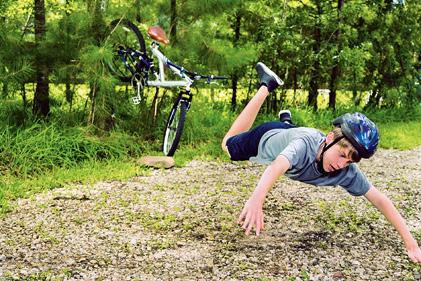

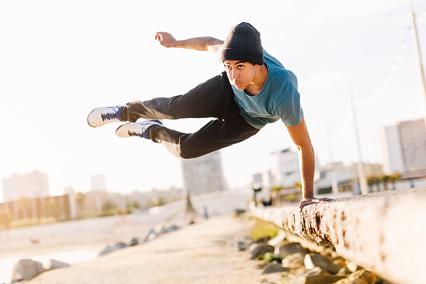

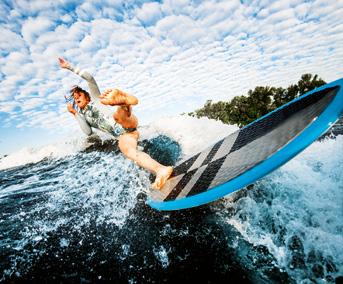
1 Look at these children. Which ones have lost their balance? Write the numbers in your notebook. Then explain why.

PLAY ZONE
Almost impossible

8
¡¡
My body moves and compensates to help me keep balance.
Balance
a b c e d f
Cooperative balance
Dynamic balance is even more difficult.
Some sporting activities require cooperative balance. This is when a group of people work together to keep a stable position, either when moving or when standing still.
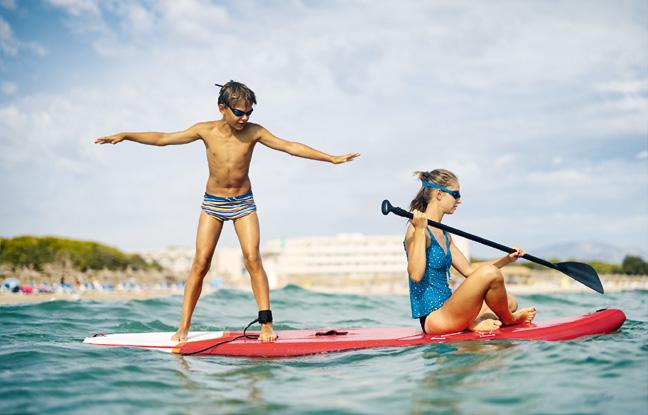

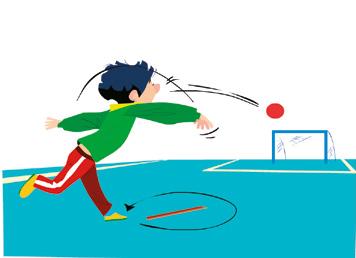
2 Look at these people. How are they keeping their balance? Write your answer in your notebook.
3 Write in your notebook about an imaginary situation that needs good cooperative balance. Then, research on the Internet the “castells” that are part of the Representative List of the Intangible Cultural Heritage of Humanity (Unesco) since 2010.



Everything’s spinning PLAY ZONE

9 U1
¡¡
Body language
The gestures you make with your face and your body show what you are feeling inside.
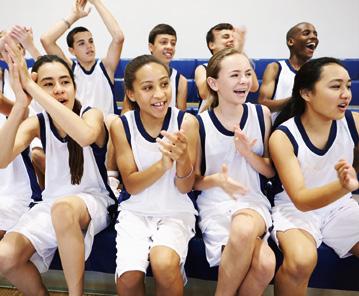
By looking at people’s body language you can understand what they are feeling. Empathy is the ability to put yourself in someone else’s shoes. It helps you understand what other people are feeling and allows you to share their emotions.



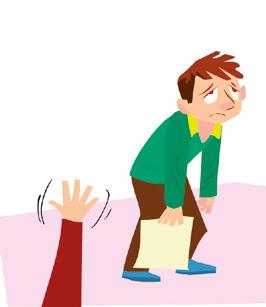
4 Look at the picture. Choose three people. Look at their body language and write what they are feeling. When do you feel like that? Write your answer in your notebook.

I know how you feel.

PLAY ZONE
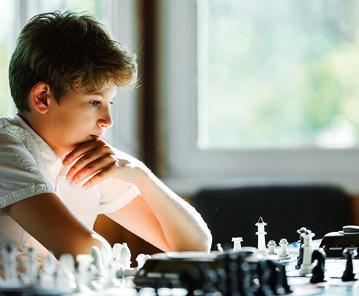
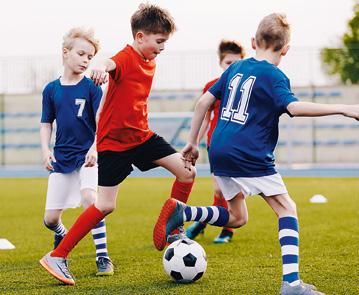
Put yourself in my shoes

10
¡¡ a b c e d f
Moving around
5 Look at the diagram. Read and learn the characteristics of moving around.






Learn more at anayaeducacion.es

Type

Crawling Climbing

Backwards
Propulsion
Sliding
Involuntary
Voluntary
Parabolic Vertical

Horizontal
PLAY ZONE
Cut the thread
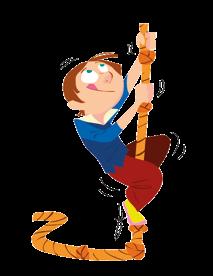
11 U1
¡¡
Intention Running Walking
Trajectory Active Passive Involvement Technical Tactical Function
Means Forwards Sideways Direction
Stamina and speed
Stamina means being able to make a continuous, prolonged effort without getting tired.




The main factors that determine your stamina level are physical fitness, a balanced diet and breathing.


Speed means doing a very intense movement as quickly as possible in a short space of time.
The main factors that determine your speed are age, diet and muscle development.
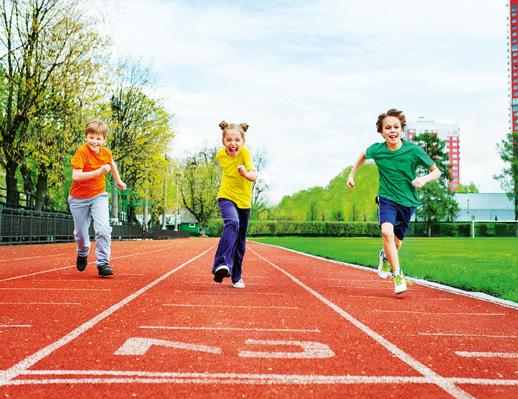

6 Look at the example. Copy the table in your notebook and colour in the relationship between speed and stamina for each one.
7 Think of a game in which speed is the most important thing. Now think of one in which stamina is the most important factor. Write them in your notebook.

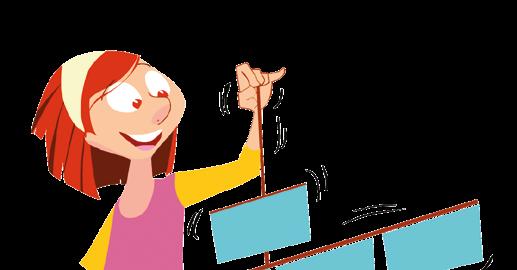

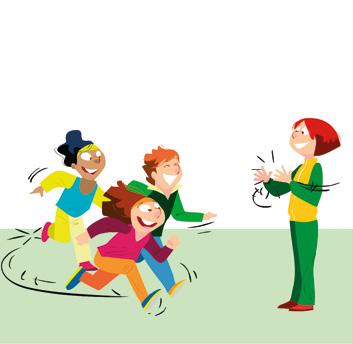
12
PLAY ZONE ¡¡
Strength Flexibility Stamina Speed 1 2 3 4 5 6 7 8 9 10 0 StaminaSpeed a b
Fifth gear
Basic physical abilities
Pre-sport activities
Pre-sport activities are simplified versions of real sports. Many things are different, including the rules, the number of players, the playing area and the materials used.

It’s amazing how many games and

The aim of these activities is to help children learn sporting skills and abilities, without actually having to compete. Pass




13 U1
ZONE ¡¡
the ball PLAY
8 In your notebook, match each pre-sport activity to its correct sport.
a Football
1 2 3 b c
9 Think of a pre-sport activity linked to basketball. Describe it in your notebook.
Floorball Baseball
W hat did I learn?
10 Define them in your own words in your notebook.
a) Cooperative balance
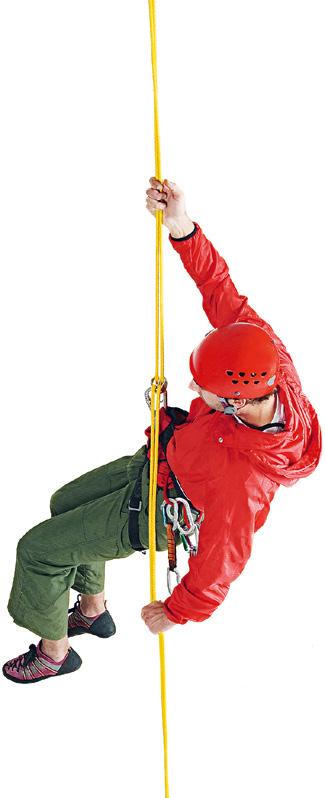

b) Empathy
c) Stamina
d) Speed.
11 Look at the pictures. Analyse the movements and explain them in your notebook.

Traffic lights: Colour in next to the activities.
I know how to do it
I need help
I don’t know how to do it
14 PORFOLIO
a b
Together, make a timeline with photos and other memories from your Primary School years.

1 Collect memories from Primary School, from different subjects, sports, excursions.

2 Organise everything to make a class mural. Add labels to show people, places or anything that is important to you.
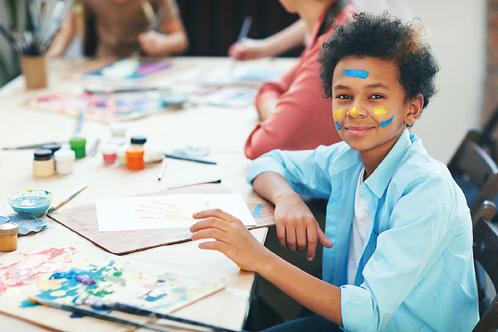
3 Reflect on what you liked best about Primary School and what you liked least; what you would like to change in your school to improve it, etc.
Pre-sport activities
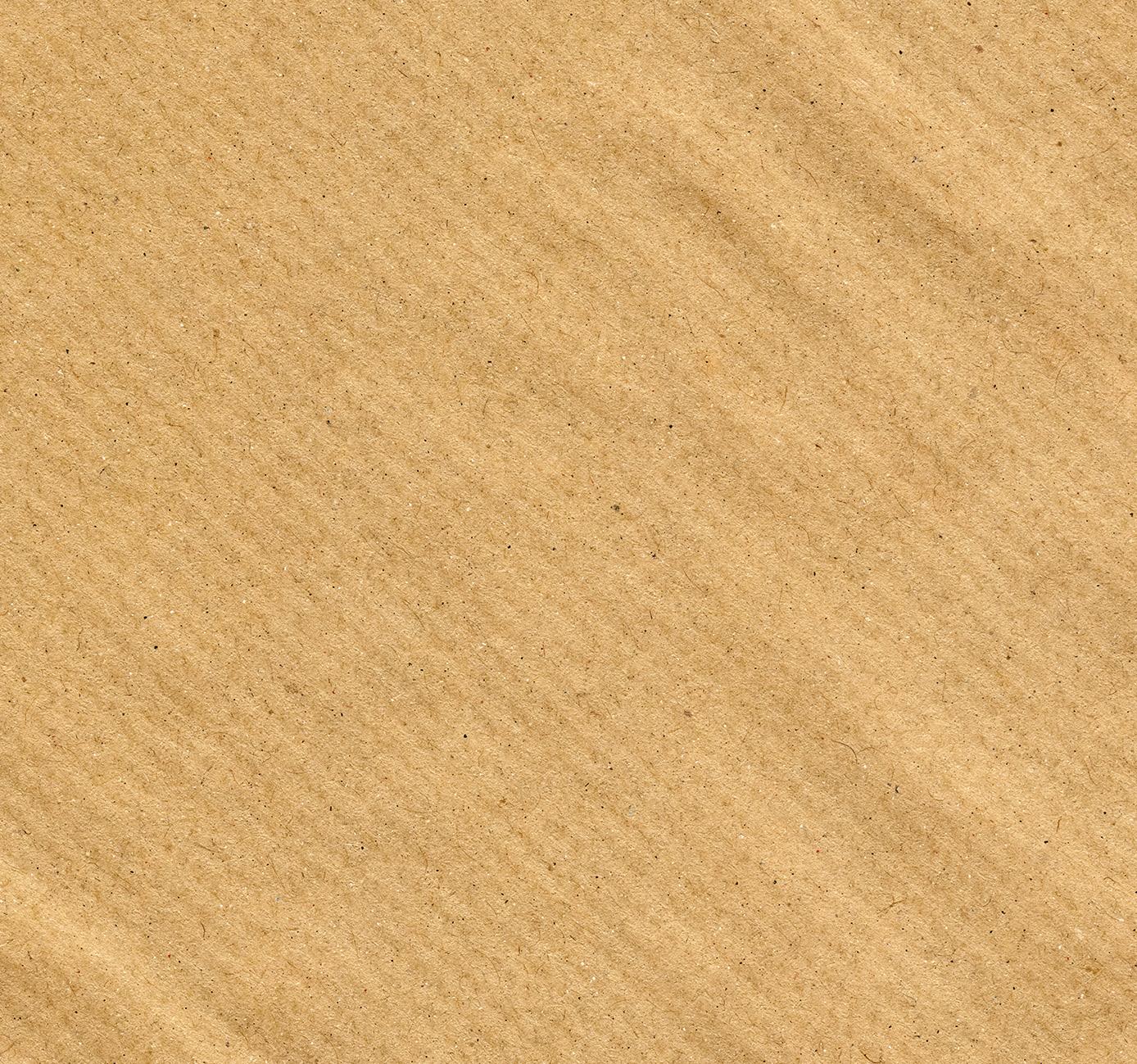
Stamina and speed
Balance Moving around Empathy
a) What are you best at? Why do you think it is important? What evidence do you have?
b) What are you worst at? Why? What do you think you need to improve?
U1 15
2 A space for all
Public space is available to everyone for activities, exercise or to enjoy.
What do you think?
Do you think you are can made public spaces for everyone to play or exercise?
The facts
More than half of the world’s population lives in cities and has no space for physical activity in healthy conditions.
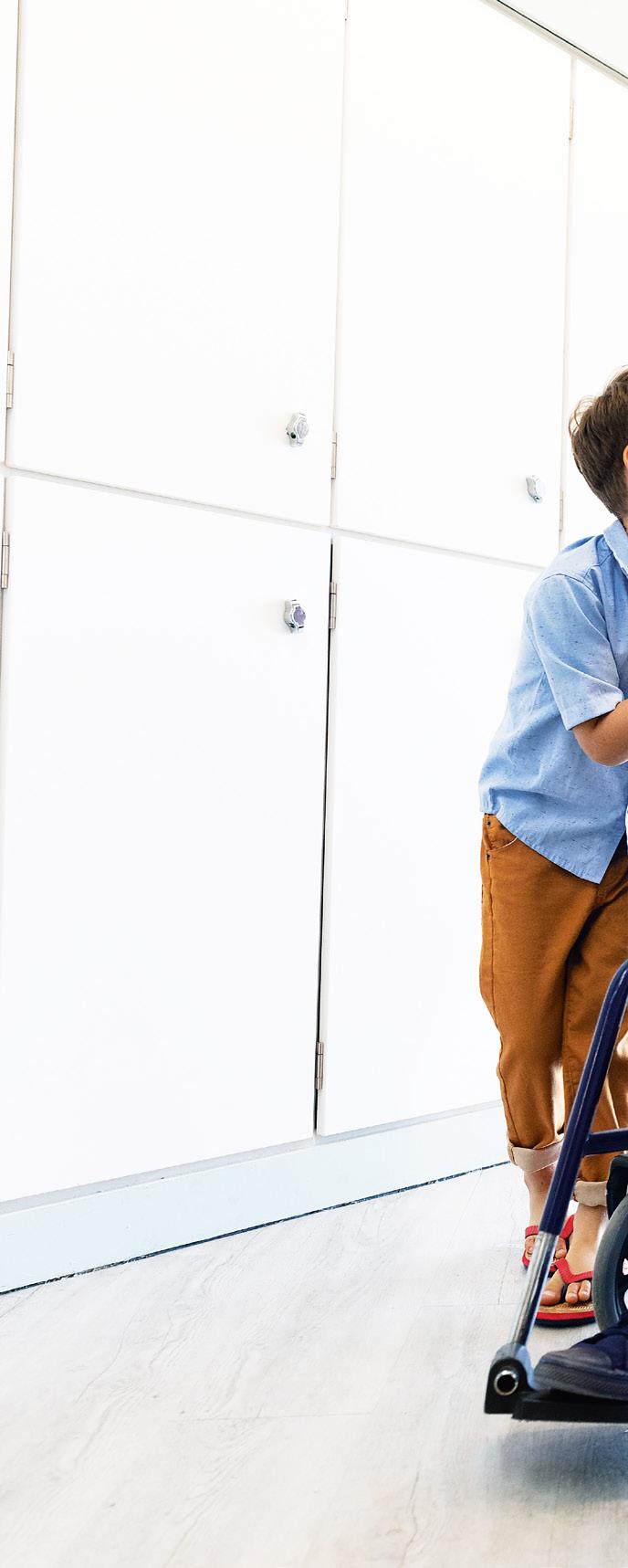
Target in action
Be aware of the importance of improving the space around us to encourage sustainable and healthy use.
16
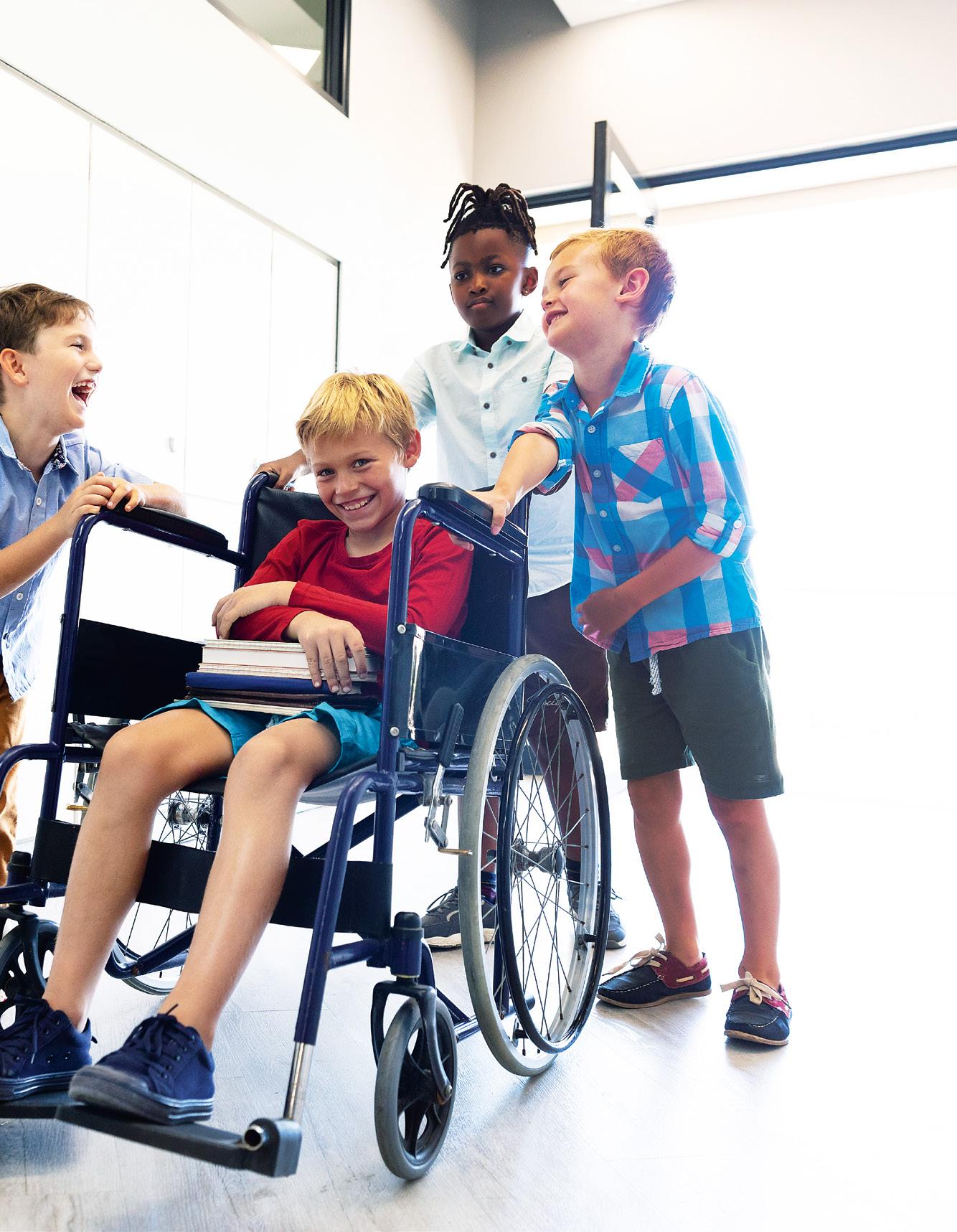

17 11
Spins or rolls
1 Look, read and learn the characteristics of spins and rolls.
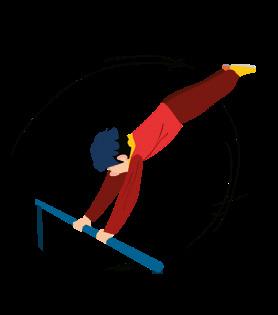
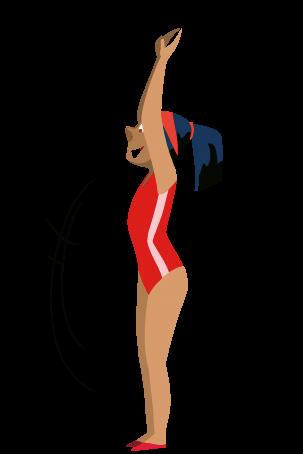
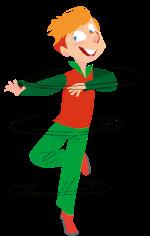

2 Look at the picture. Analyse the spin and explain it in your notebook.
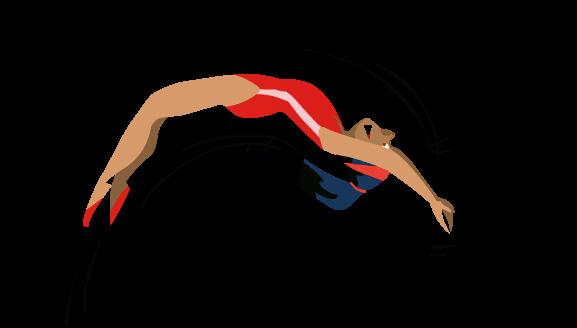


PLAY ZONE
Heads or tails
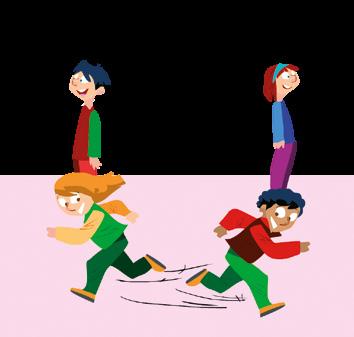
18
¡¡
Longitudinal Transversal Antero-posterior Axis of rotation Vertical (upright) Tilted Initial position Vertical (upside down) Horizontal All the time Sometimes No support Support Forwards Backwards Sideways Direction External Internal Position of the axis in relation to your body
The characteristics
of spins or rolls

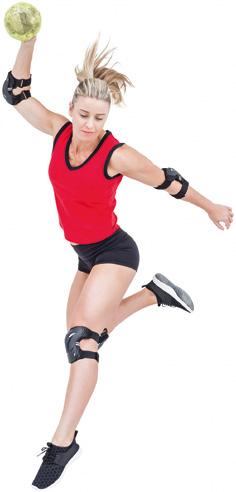
3 Think of an activity in which you spin or roll. Describe it in your notebook. Then say what type it is.


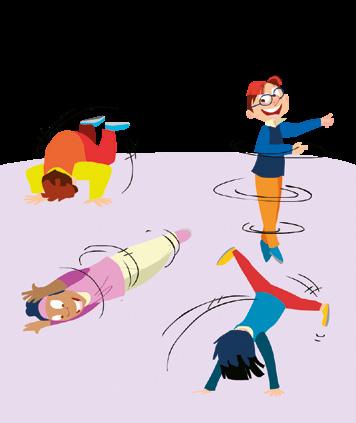
Learn more at anayaeducacion.es


4 Think of some situations the people doing these sports might use spins or rolls. Write them in your notebook.

PLAY ZONE
Spinning tops
19 U2
¡¡
The function of muscular system

The muscles in your body:
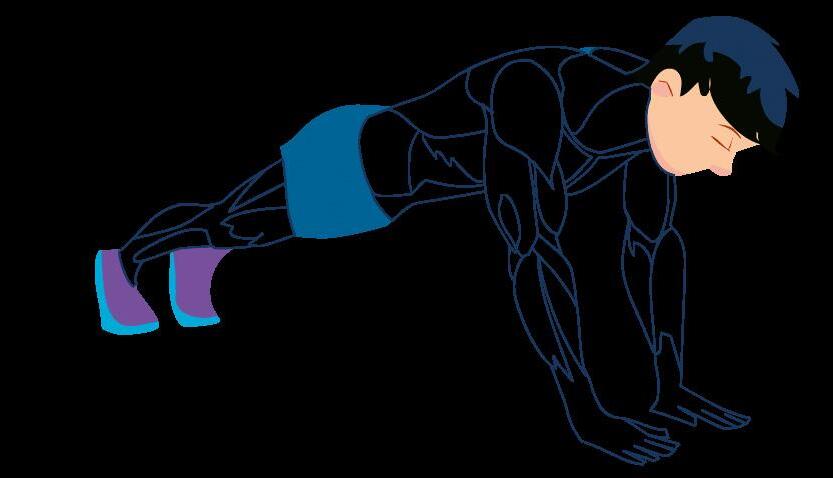
• Allow you to move, thanks to the combined action of bones and joints.
• Stabilise your body’s position, helping you keep your balance and posture.

• Maintain your body temperature, since muscles generate heat when they move.

• Mobilise and store your body’s substances.
Develop your mind and body.
6 Choose a sports exercise. Describe it in your notebook. Then say what muscles, bones and joints are used.
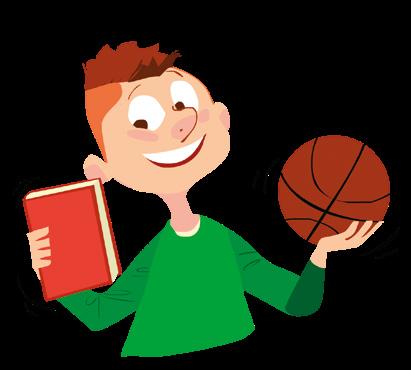
The human doughnut PLAY
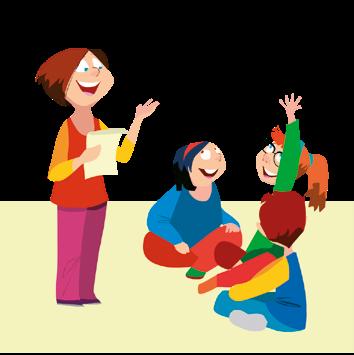
20
5 Copy the pictures in your notebook and colour in the muscles the people in the pictures are using.
¡¡
ZONE
7

The origin of dance
Classical ballet first developed in Italy during the Renaissance. It later became a professional activity in France. One main characteristic is that dancers have absolute control over their bodies. Each pose is precise and the dancer has perfect balance.

Contemporary dance developed at the end of the 19th century as an alternative to ballet. Its aim is to enable dancers to express themselves more freely.

It always tries to be innovative and uses many different influences from the local environment to convey ideas, emotions and feelings more freely.

What type of dance would you use to convey your feelings? Write your answer in your notebook. What movements would you use? What would you like to express? Explain your answers.


PLAY ZONE
Dances of the world
21 U2
¡¡
The types of strength
You use your strength when you make a muscular effort to overcome or counteract external resistance. There are three types of strength:
• Maximum strength: the greatest effort you can make during a single muscular contraction.
• Strength endurance: the amount of time for which you can maintain a muscular effort.

• Speed strength: the power and agility of the movement made by the muscular effort.





8 Look at the pictures. What type of strength are they using: maximum strength, endurance or speed? Write your answers in your notebook.
Did you know that ants can lift twenty times their body weight?

9 What is most important for developing your strength: age, training or diet? Write your answer in your notebook and explain why.
PLAY ZONE
The dancing bottle
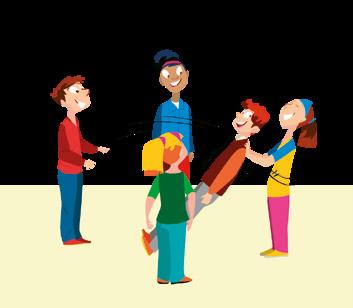
22
¡¡
e
a b c d
Popular and traditional games
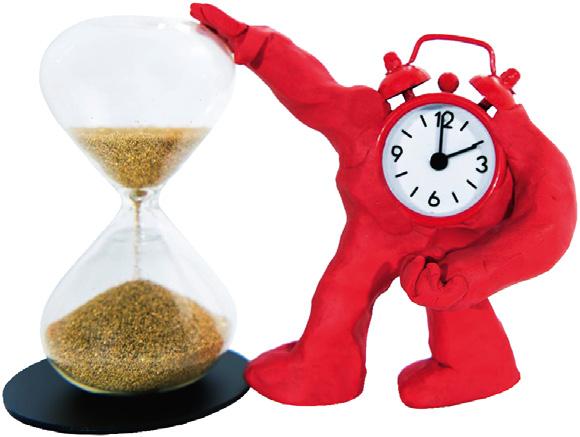

Popular and traditional games form part of each country or region’s cultural heritage. They have very specific and easily recognised characteristics.

Some of the games we play in our country originally developed in other countries. We changed them to suit our customs and preferences.
All these games exist today, enriching the traditions of each geographic region.


10 Make up a game that people will still be able to play one hundred years from now. Draw it in your notebook and explain its rules.

23 U2
Frog
¡¡
PLAY ZONE
Some games have been around for generations!
W hat did I learn?
11 Read the sentences. In your notebook, write T if they are true and F if they are false.
a) Spins and rolls can have support all the time, some of the time or no support at all.
b) When spinning or rolling, the position of the axis in relation to your body can be internal, external or lateral.

c) Your muscles help maintain your body temperature.
d) Your muscles enable you to talk, chew and mime.
e) Joints are the only elements responsible for moving your body.
f) Contemporary dance developed during the 16th century.
g) Strength endurance is the time for which you can maintain a muscular effort.

h) Popular and traditional games are the same in all countries.
12 Answer these questions in your notebook.
a) Which muscles do you use in shot put?
b) What type of strength do you use?
24 PORFOLIO
Traffic lights: Colour in next to the activities. I know how to do it
I need help I don’t know how to do it
EIn small groups, design a playground so that all your classmates can play or play sports there. Think about important changes to include everyone. Copy and complete the following attribute wheel in your notebook.

What do we need to do?
Does it work?
How can we adapt the playground so that everyone can enjoy it?
How can we do it?
Who is going to use it?
14 Think of what you learned in this unit. How can you use it in real life? Make a list in your notebook. Give some examples.

U2 25
1 2 3 4
90 100 80 70 60 50 40 30 20 10 0 110 120 130 140 150 170 160 180 ? Spinning and rolling Strength Contemporary dance
Sport

Competitive tension
There are important moments in sport which can be very tense. You may feel tense just before you compete, or if something unexpected happens which makes you feel you are not in control of the situation.
During the competition, competitors and the audience may feel many intense emotions. It is important to understand these feelings and manage them. This will help avoid situations which cause you to make mistakes or lose control of your emotions.
Control your actions
Control your thoughts
If you have an important event, always keep calm and control the thoughts generated by your feelings. Think about your reactions and never hurt anyone.
26
Fair play
emotions under control
Before a tense situation Keep calm Keep your
Have a balanced attitude
Rivals
Respect is the key to success in any sporting competition.
Appreciating your rival helps you learn, enjoy the competition and make an effort. In short, it makes you better at sport.
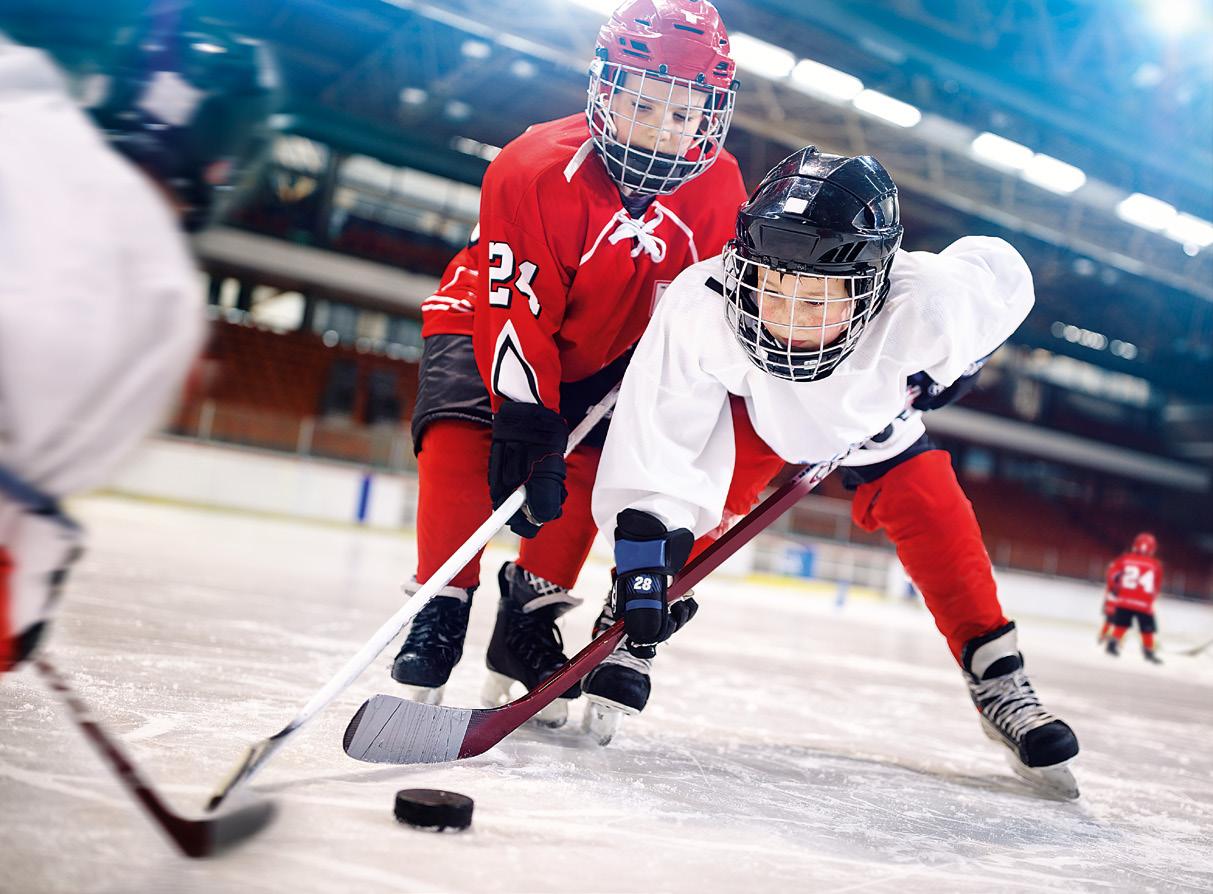
competition helps you do your best and make an effort to improve.
Whether you win or lose depends on how good your rival is. Your rivals make you better at sport because they force you to make an effort and get better.
27
Respectful
















































© GRUPO ANAYA, S.A., 2023 - C/ Valentín Beato, 21 - 28037 Madrid.
All rights reserved. No part of this publication may be reproduced, stored in a retrieval system, or transmitted, in any form or by any means, electronic, mechanical, photocopying, recording, or otherwise, without the prior permission of the publishers.



















































































































































